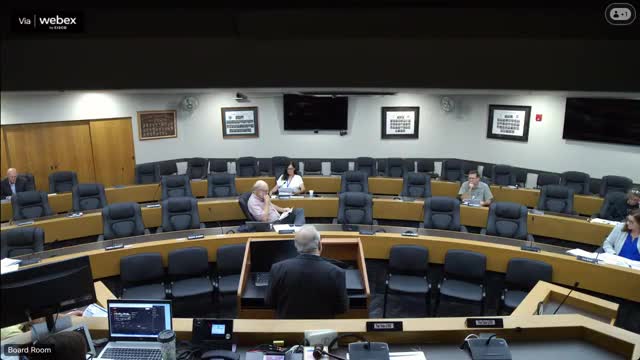Rising costs of specialty drugs spark urgent healthcare debate
August 23, 2024 | LaSalle County, Illinois
This article was created by AI summarizing key points discussed. AI makes mistakes, so for full details and context, please refer to the video of the full meeting. Please report any errors so we can fix them. Report an error »

In a recent government meeting, discussions centered around the challenges and dynamics of the healthcare system, particularly focusing on the rising costs associated with specialty drugs and the implications for insurance plans. Concerns were raised about the affordability of treatments, especially for diabetes and cancer, as well as the impact of gene therapy drugs.
The meeting highlighted that while there is a high rate of generic drug dispensing—91.1% year-to-date—specialty drugs continue to represent a significant portion of healthcare expenditures, accounting for 41.2% of total paid claims. The discussion noted that the costs associated with these specialty treatments are often driven by their complexity and the need for ongoing management, particularly in cases of chronic conditions.
A key point of discussion was the potential for biosimilars—drugs that are similar to already approved biologic medications—to provide more affordable alternatives to specialty drugs. These biosimilars could cost about one-third of the current specialty drug prices, which could alleviate some financial pressure on both patients and insurance plans.
The meeting also addressed the stark cost differences between outpatient and hospital-administered treatments. It was noted that hospitals tend to charge significantly more for the same services, with costs potentially three to four times higher than those in outpatient settings. This discrepancy raises questions about the sustainability of healthcare spending and the role of insurance plans in managing these costs.
Participants discussed the importance of insurance plans being proactive in negotiating treatment options and costs, emphasizing the need for a balance between providing necessary care and maintaining affordability. The conversation underscored the role of insurance providers in guiding patients toward cost-effective treatment options while ensuring quality care.
Overall, the meeting reflected ongoing concerns about healthcare costs, the need for transparency in drug pricing, and the potential for policy changes to improve access to affordable medications. The discussions indicate a growing recognition of the need for innovative solutions to address the financial burdens faced by patients and the healthcare system as a whole.
The meeting highlighted that while there is a high rate of generic drug dispensing—91.1% year-to-date—specialty drugs continue to represent a significant portion of healthcare expenditures, accounting for 41.2% of total paid claims. The discussion noted that the costs associated with these specialty treatments are often driven by their complexity and the need for ongoing management, particularly in cases of chronic conditions.
A key point of discussion was the potential for biosimilars—drugs that are similar to already approved biologic medications—to provide more affordable alternatives to specialty drugs. These biosimilars could cost about one-third of the current specialty drug prices, which could alleviate some financial pressure on both patients and insurance plans.
The meeting also addressed the stark cost differences between outpatient and hospital-administered treatments. It was noted that hospitals tend to charge significantly more for the same services, with costs potentially three to four times higher than those in outpatient settings. This discrepancy raises questions about the sustainability of healthcare spending and the role of insurance plans in managing these costs.
Participants discussed the importance of insurance plans being proactive in negotiating treatment options and costs, emphasizing the need for a balance between providing necessary care and maintaining affordability. The conversation underscored the role of insurance providers in guiding patients toward cost-effective treatment options while ensuring quality care.
Overall, the meeting reflected ongoing concerns about healthcare costs, the need for transparency in drug pricing, and the potential for policy changes to improve access to affordable medications. The discussions indicate a growing recognition of the need for innovative solutions to address the financial burdens faced by patients and the healthcare system as a whole.
View full meeting
This article is based on a recent meeting—watch the full video and explore the complete transcript for deeper insights into the discussion.
View full meeting
